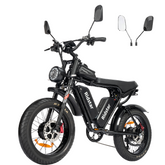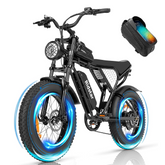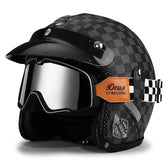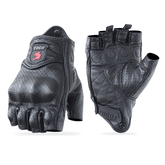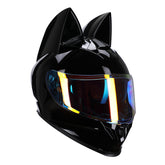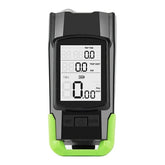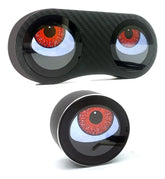2025 Off-Road E-Bike Buyer’s Guide: Why the Ridstar Q20 Pro Excels on Trails
2025 Off-Road E-Bike Buyer’s Guide: Why the Ridstar Q20 Pro Excels on Trails
By by yueyue 19 Sep 2025
Methodology & Data Sources: Range and performance figures are synthesized from industry-standard specifications (48V/20Ah battery classes, PAS usage), peer brand documentation, public rider feedback (reviews & forums), and Ridstar internal testing. Real-world range varies with rider weight, terrain, temperature, wind, and speed. We avoid inflated claims and present conservative, repeatable ranges.
Why Choose the Ridstar Q20 Pro?
The Ridstar Q20 Pro is designed for riders who need an e-bike that goes far beyond simple city commuting. Equipped with a 2000W peak dual-motor system and 20×4.0” all-terrain fat tires, it delivers impressive torque and grip, giving you the confidence to climb steep hills, cut across rocky trails, or ride over sand and snow without compromise.
Its 48V 20Ah removable lithium battery (with optional dual-battery setup) provides extended range for long-distance adventures, while the rugged frame and suspension system ensure durability and comfort even on uneven terrain. The Q20 Pro also integrates upgraded braking for safer descents, making it a reliable partner for mountain riders and outdoor explorers.
Whether you’re looking for raw climbing power, all-day endurance, or a versatile fat-tire e-bike that can tackle both trails and tough commutes, the Q20 Pro strikes the balance between performance, durability, and adventure-ready design.
Explore Ridstar Certified E-Bikes

Motor & Climbing Power
The Ridstar Q20 Pro is equipped with a powerful 2000W peak motor(Dual motors),The premise of conquering all road conditions: 1000w X 2 powerful dual-motor heart, the maximum speed of up to 37 MPH, facing the 40 ° gradient of the road is still not bad, easy to deal with a variety of complex road conditions, is an all-terrain conquering warrior!with a powerful torque of 90NM x 2, it can travel on complex and rugged mountain roads, and can easily drive on roads with a 45° slope. delivering the high torque essential for mountain riding and steep inclines. This extra pulling power ensures that riders can confidently tackle rugged terrain, from rocky paths to long uphill climbs, without losing momentum.
When facing extended climbs, smart use of the Pedal Assist System (PAS) helps regulate motor temperature, avoid overheating, and extend sustained performance. Riders can start with mid-level PAS modes (such as PAS 3–4) for efficiency, then switch to higher levels when extra torque is needed.
This combination of high-torque output, PAS flexibility, and fat-tire traction makes the Q20 Pro an ideal choice for challenging mountain routes, heavy cargo riding, or adventurous trail explorations. Whether you're conquering steep hills or carrying extra load, the motor’s performance ensures smooth acceleration and reliable climbing power.
Battery Capacity & Real-World Range
The Ridstar Q20 Pro sets itself apart with a high-capacity, removable 48V 20Ah lithium battery—and for riders who demand maximum endurance, an optional dual-battery upgrade (52V 40Ah combined) is available. This setup provides the flexibility to balance power, portability, and extended range, ensuring you can take on both daily commutes and all-day off-road adventures.
Real-World Performance (Single Battery – 48V 20Ah)
-
Flat terrain, PAS 2–3: ~72–96 km per charge, ideal for smooth trails and city commuting.
-
Mixed hills, PAS 3–4: ~56–80 km depending on incline and riding intensity.
-
Full-throttle off-road: ~45–60 km when pushing raw power on steep climbs.
-
Cold weather (≤5°C): Expect 15–25% range reduction due to natural lithium battery limitations.
Extended Performance (Dual Battery – 52V 40Ah)
With the dual-battery option, riders can double their capacity, reaching up to 180 miles (~290 km) in PAS assist mode under optimal conditions. In full-electric mode, real-world range averages 65–75 miles (~105–120 km)—perfect for long-distance mountain rides or multi-day trips without frequent charging stops.
Practical Benefits
-
Modular Design: Both batteries are easily removable, allowing quick swaps or secure indoor charging.
-
Fast Charging: Dual 48V/3A chargers reduce downtime between rides.
-
Range Security: Many riders carry a spare or rely on the dual pack to minimize “range anxiety.”
-
Longevity Tips: Avoid storing at 100% charge, recharge at room temperature, and never over-discharge to extend battery life.
The Q20 Pro’s battery system is engineered for serious endurance, making it one of the strongest advantages in the mountain e-bike category. Whether you’re navigating steep backcountry climbs or covering long urban miles, the dual-battery flexibility ensures you’ll always have the range to get home.
Extend your rides with a spare 48V 20Ah battery and carry the original charger for mid-day top-ups.

Brakes & Safety on Steep Descents
Steep descents demand reliable braking. Maintain stopping power with timely pad and rotor service:
-
Steep mountain descents put immense stress on an e-bike’s braking system, making reliable braking one of the most critical factors for both performance and safety. The Ridstar Q20 Pro is equipped with disc brakes designed for heavy-duty use, but like any high-performance bike, consistent maintenance is essential to keep them at peak efficiency.
Why Proper Braking Matters
-
Heat buildup: Prolonged braking on steep trails generates heat, which can cause brake fade or reduced stopping power if not managed.
-
Rotor alignment: Even a slightly bent disc can cause rubbing, vibration, or uneven braking.
-
Pad wear: Worn pads drastically reduce braking efficiency and increase stopping distance—especially dangerous on fast descents.
Maintenance & Best Practices
-
Replace brake pads promptly: Inspect your pads every few weeks, especially if you ride in wet, sandy, or muddy conditions. When pads are worn thin, replace them with official Ridstar Brake Pads to restore consistent bite and safety.
-
Check and true the brake disc: A warped rotor can cause noise, uneven braking, and loss of control. Regularly inspect and realign your Ridstar Brake Disc to ensure smooth performance.
-
Keep the system clean: Dirt and oil on pads or rotors reduce braking friction. Wipe down with isopropyl alcohol after wet or muddy rides.
-
Brake technique: Instead of holding the levers constantly, apply controlled, pulsed braking to reduce heat buildup and maintain better control.
Pro Tips for Downhill Riders
-
Pair braking with body positioning: shift your weight back slightly on steep descents to keep balance and traction.
-
Consider upgrading to hydraulic disc brakes if you frequently ride in mountainous regions, as they offer better modulation and heat management.
-
Always test your brakes at the top of a trail before committing to a steep descent.
-
Suspension & Comfort on Rough Terrain
The Ridstar Q20 Pro is equipped with reinforced front forks and adjustable suspension, specifically designed to absorb shocks from rocks, roots, and uneven ground. On rugged trails, this setup reduces rider fatigue, allowing you to stay in control for longer periods without compromising stability.
-
Impact absorption: The upgraded fork smooths out sudden jolts, making technical descents more predictable.
-
Adjustable tuning: Riders can fine-tune suspension stiffness based on weight, terrain, or riding style — softer for comfort on bumpy trails, firmer for aggressive downhill control.
-
Longevity: By minimizing the strain transferred to the frame and wheels, proper suspension setup also helps extend the bike’s overall lifespan.
Whether you’re navigating forest trails, rocky climbs, or loose gravel paths, the Q20 Pro’s suspension ensures a balance between control and comfort, making it a versatile choice for riders who want confidence in rough conditions.
Fat Tires vs Mountain Trails
Another standout feature of the Q20 Pro is its 20×4.0” fat tires, which significantly improve traction and stability across challenging terrain. Unlike standard mountain bike tires, these extra-wide tires are designed to “float” over obstacles that would normally unsettle a narrower setup.
-
Enhanced traction: The large surface area grips better on loose soil, gravel, sand, and even snow, giving riders more control on unpredictable trails.
-
Shock absorption: Combined with suspension, fat tires act as a natural cushion, further reducing vibration and fatigue during long rides.
-
All-weather confidence: Wet, muddy, or icy conditions become far more manageable thanks to the added grip.
-
Trade-off: Fat tires do add weight, which can slightly reduce efficiency on paved roads, but for off-road use, the stability advantage is unmatched.
Together, the suspension and fat-tire design transform the Ridstar Q20 Pro into a true mountain-ready e-bike. It’s not just about getting from point A to B — it’s about doing so with confidence, comfort, and control.
Fit & Rider Experience
The Ridstar Q20 Pro is thoughtfully designed to suit riders in the 170–190 cm height range, offering a balanced and ergonomic fit. Its upright riding posture reduces strain on the back and shoulders, making it well-suited for long-distance climbs and giving riders more confidence during steep descents.
-
Ergonomic geometry: The frame geometry positions the rider in a natural, relaxed stance, minimizing fatigue during extended rides.
-
Comfort-focused design: The wide saddle, adjustable seat height, and optimized handlebar reach help riders maintain comfort whether on short commutes or multi-hour trail sessions.
-
Confidence on descents: The upright posture paired with fat tires and suspension ensures riders maintain stability, even on loose gravel or rocky terrain.
-
Adaptability: Whether you’re a fitness enthusiast looking to combine cardio with adventure, or a commuter tackling varied terrain daily, the Q20 Pro adapts seamlessly.
This careful attention to ergonomics means the Q20 Pro isn’t just powerful — it’s also built to enhance your overall riding experience, combining performance, comfort, and fitness benefits in one trail-ready package.
Essential Accessories for Trail Riding
-
1) Protective Helmet – Your First Line of Safety
Why it’s essential: Steep descents, loose gravel, and sudden obstacles all carry risk. A certified helmet effectively disperses impact forces and protects your head in case of falls.
How it improves the ride:-
Boosts confidence on technical trails.
-
Lightweight, ventilated design reduces heat and neck fatigue.
-
Reflective details or built-in light mounts improve night visibility.
👉 Explore options: Ridstar Helmets
2) Grip & Safety Gloves – Control and Protection
Why it’s essential: Off-road riding means constant steering corrections and vibrations. Gloves enhance grip, absorb shocks, and protect your hands in case of a crash.
How it improves the ride:-
Better control on wet or muddy terrain.
-
Shock-absorbing pads reduce fatigue on long rides.
-
Reinforced fabric protects against scrapes and cuts.
👉 Browse: Ridstar Gloves
3) Waterproof Rear Bag – Carry More, Worry Less
Why it’s essential: Off-road adventures often require extra gear—tools, chargers, food, or even a spare battery. A waterproof rear bag secures essentials while keeping the bike stable.
How it improves the ride:-
Protects belongings from rain, mud, and splashes.
-
Keeps the bike’s center of gravity low for better handling.
-
Multiple compartments make it easy to organize gear.
👉 Check out: 10L Waterproof Rear Bike Bag
4) Navigation Phone Holder – Focus on the Trail
Why it’s essential: Off-road routes can be unpredictable. A secure phone holder keeps maps, speed, and battery data visible without distracting you.
How it improves the ride:-
Anti-vibration mount ensures your phone stays stable on rough terrain.
-
Quick-release design makes it easy to remove your phone for photos or charging.
-
Lets you monitor navigation and performance in real time.
👉 Try: Ridstar Phone Holder
-
Q20 vs Q20 Pro vs Competitors
| Model | Best for | Strengths | Trade-offs |
|---|---|---|---|
| Ridstar Q20 | Urban commutes | Affordable, stable, removable battery | Less torque, not optimized for steep trails |
| Ridstar Q20 Pro | Mountain & trail riding | Powerful motor, fat tires, dual-battery option | Heavier; requires more storage space |
| Other competitors | Varied use cases | Brand-specific features | Often higher cost for similar specs |
Mountain E-Bike Buying Checklist
Before investing in a mountain e-bike like the Ridstar Q20 Pro, go through this checklist to make sure the bike truly fits your needs and riding style:
✅ Confirm your terrain – Identify whether you’ll be riding mostly on forest trails, steep mountain paths, snow, gravel, or a mix. This ensures you choose a model with the right tires and suspension.
✅ Motor torque for climbs – Look for high peak wattage and strong torque ratings. A 2000W peak motor is ideal for riders who need reliable climbing power on steep terrain.
✅ Battery capacity with a buffer – Make sure the battery covers your typical route plus an extra 20% reserve. For longer trips, consider a dual-battery option to avoid range anxiety.
✅ Braking system inspected – Check that pads and discs are fresh and properly aligned. Reliable stopping power is crucial for steep downhill riding.
✅ Suspension tuned to you – Adjust the fork and shock settings based on your weight, riding style, and terrain. A properly tuned suspension reduces fatigue and improves control.
✅ Essential accessories packed – Helmet, gloves, waterproof storage, and a navigation phone holder are not optional; they directly improve safety, comfort, and riding confidence.
✅ Weight and fit – Ensure the frame size matches your height (for Q20 Pro, best suited for 170–190 cm riders). Proper fit helps maintain balance and reduces strain.
✅ Maintenance ready – Plan a routine for tire pressure, chain lubrication, and brake checks. Regular upkeep extends performance and safety.
✅ Budget for upgrades – Factor in the cost of spare batteries, brake pads, or protective gear, which are common upgrades for serious riders.
FAQs
How does the Q20 Pro handle steep hills?
The 2000W peak motor (1500W nominal) delivers the torque required for demanding inclines. When combined with the Pedal Assist System (PAS), riders can conserve battery power and prevent motor overheating by starting climbs in PAS 3–4 and shifting higher only when necessary. Fat tires also add traction on loose surfaces, reducing wheel slip and giving you more control on rocky or gravel climbs.
Is a spare battery worth it?
Yes. For trail riders or commuters covering long distances, a spare 48V 20Ah battery is one of the best upgrades. Carrying a second battery effectively doubles your range and eliminates “range anxiety.” With the optional dual-battery setup (52V 40Ah combined), the Q20 Pro can reach up to 180 miles (PAS mode) in optimal conditions. For multi-day trips, this means less time charging and more time riding.
How often should I replace brake pads?
Brake pad life depends on terrain and riding style. On average:
-
Inspect pads every 2–3 months or around 800 km of riding.
-
Replace with Ridstar Brake Pads when they’re less than 2 mm thick.
-
Always check the Ridstar Brake Disc for warping or uneven wear, as this impacts stopping power.
Regular maintenance ensures safe braking, especially on steep descents where heat and stress on the system are highest.
Is it suitable for snow or sand?
Yes. The 20×4.0” fat tires are specifically designed to increase surface contact, which provides extra grip on soft terrain like snow, mud, and sand. However, range is typically reduced by 15–25% because the motor works harder in these conditions. Lowering tire pressure slightly can improve traction on soft ground, but always reinflate before returning to paved surfaces.
Can I ride the Q20 Pro in the rain?
The Q20 Pro is water-resistant but not fully waterproof. Light to moderate rain is fine, but avoid riding through deep puddles or submerging electrical components. Adding fenders and regularly drying the chain, battery contacts, and controller housing after wet rides will extend longevity and maintain performance.
What’s the recommended rider height and weight limit?
The Q20 Pro is best suited for riders 170–190 cm in height. The sturdy frame and suspension can handle heavy loads, supporting up to 150 kg (330 lbs) including rider and cargo, making it a good choice for both commuting and adventure touring.

